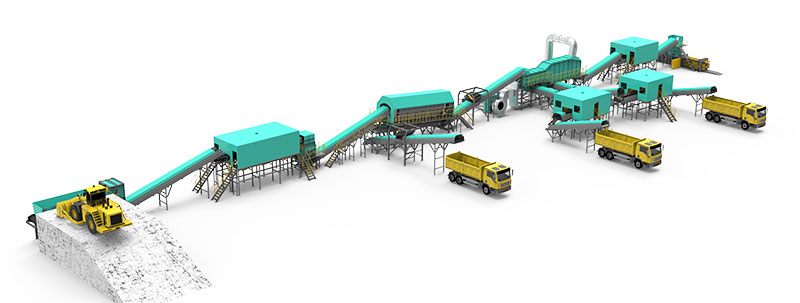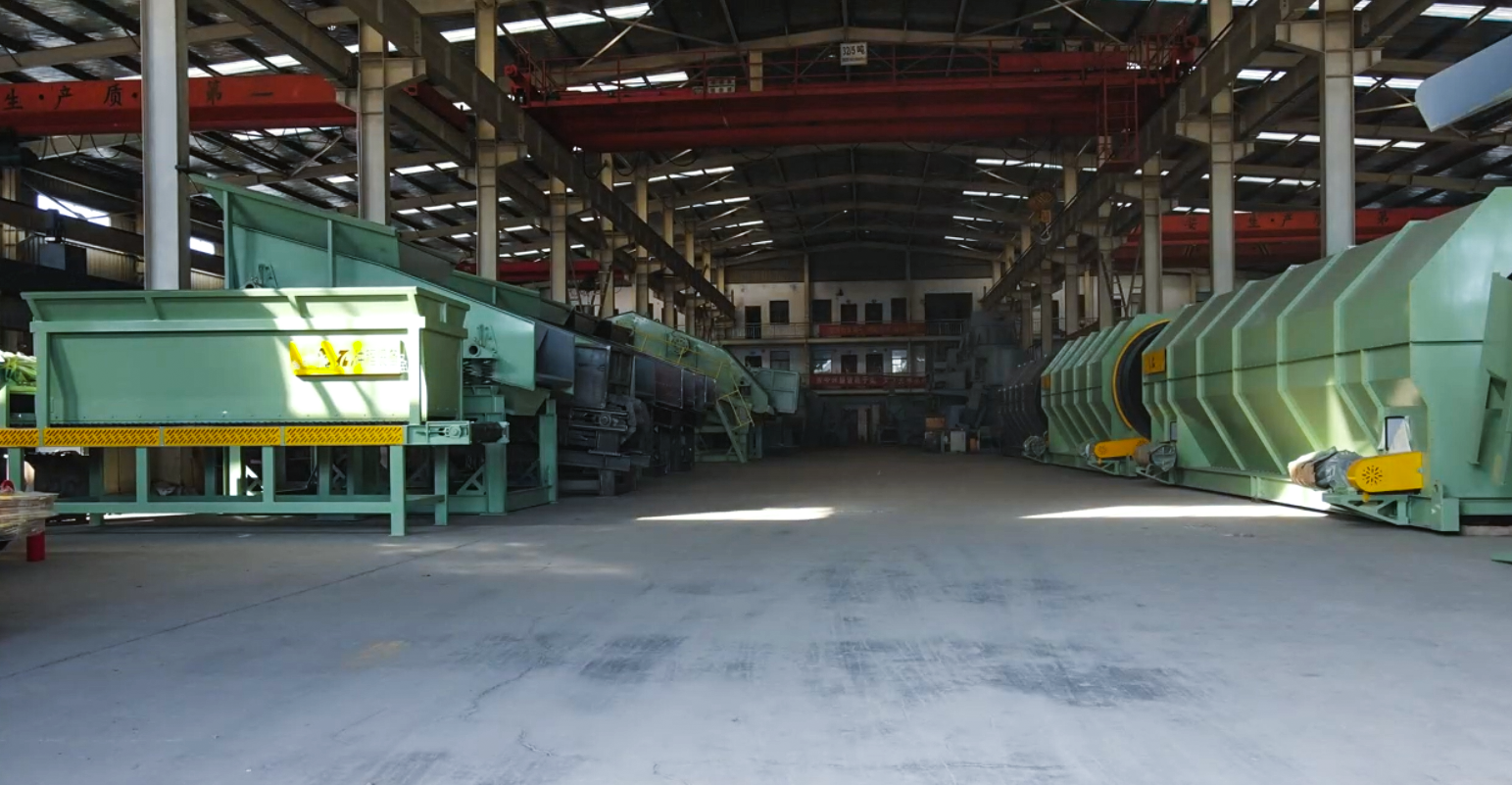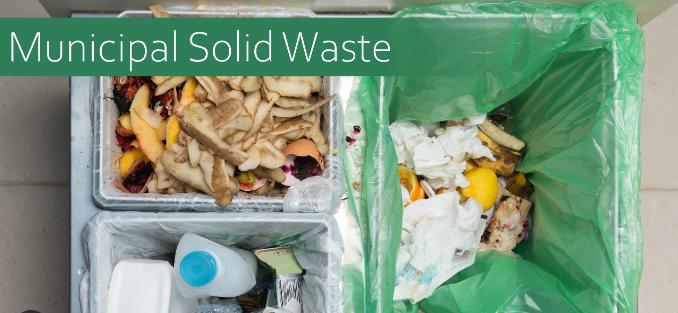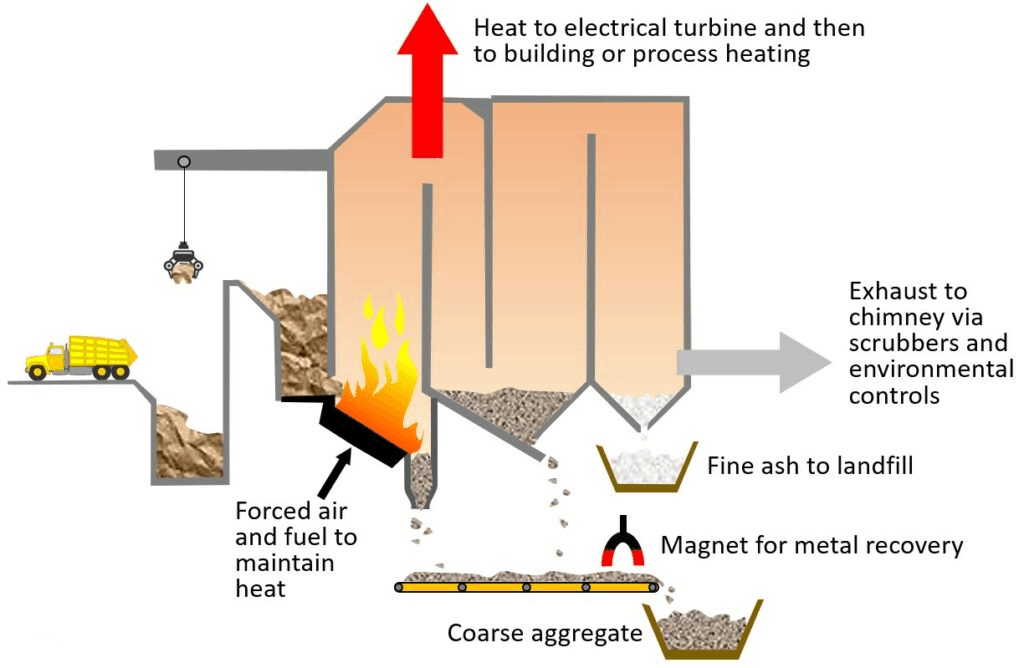municipal solid waste treatment equipment and measures to reduce waste
Garbage screening equipment for municipal solid waste is primarily used for preliminary classification and sorting of urban refuse, facilitating subsequent recycling and harmless disposal. Below are several common types of garbage screening equipment for municipal solid waste:

Fixed Screens/Rod Screens: Typically used for coarse screening, especially effective for larger particle-sized construction waste, where trash is separated based on dimensions by parallel arranged screen rods.
Vibrating Screens: Utilize vibration principles to stratify and select urban garbage according to the differing trajectories and speeds of particles of varying sizes across the screening surface.
Vibrating Screens: Appropriate for handling a variety of particle sizes, these screens use rotating drums and varying sieve hole sizes to separate garbage into distinct particle size categories.
Automatic Sorting Conveyor Systems: Designed to transport mixed waste to the processing area, incorporating infrared sensors and other technologies for primary classification.
Optical Sorting Garbage Machines: Leveraging advanced image recognition technology, they rapidly conduct intelligent classification based on the color, shape, and other characteristics of the waste.
Robotic Arm Sorting Systems: Equipped with automated robotic arms, working in tandem with sensor detection to precisely pick and categorize garbage.
Airflow Sorting Equipment: Employ the principle of airflow separation to distinguish lightweight waste like plastic bags and paper scraps from heavier waste.
Chain Plate Conveyors: Suitable for conveying waste at different stages, adaptable to the specific properties of the waste and process requirements.
Magnetic Selection Equipment: Designed to separate ferrous materials, such as metal fragments found in municipal solid waste.
These devices can be flexibly combined according to the specific design and operational needs of the waste management facility, collectively forming a complete line for the classification and efficient processing of household waste.

Regarding the treatment of municipal solid waste, a range of strategies and technologies are employed in European and American countries, typically including waste sorting, recycling, incineration, landfilling, and biological treatment. Some specific methods are:
Waste Sorting: Many countries enforce strict waste sorting regulations, requiring residents to place different types of waste into designated bins – food waste, recyclables, hazardous waste, and other waste – to facilitate subsequent processing and recycling.

Recycling: Recyclable items are collected, transported, and processed via dedicated systems, being cleaned, crushed, and pelletized to produce recycled products. Food waste from households can be processed using food waste disposers, eventually entering the sewage system or being collected centrally for composting or anaerobic fermentation to create fertilizer or biogas.
![L9}MBQF(Y]TKD%AM9LT8__J.png](/uploads/allimg/20240620/1-240620153301119.png)
Incineration: In countries like Switzerland, Japan, and the Netherlands, waste incineration is a prevalent method, converting around 70%-80% of waste into thermal energy for electricity generation and heating.

Landfilling: While European countries are gradually reducing their reliance on landfills, as of 2021, it remains one of the most dominant methods, accounting for approximately 50%-60% of waste disposal. However, even with landfills, scientifically advanced measures are often taken, such as the use of impermeable liners and gas collection systems to minimize environmental impacts.
![ZP]`P}INEG`1DBM]5)OE2NK.png](/uploads/allimg/20240620/1-240620153K95J.png)
Biological Treatment: This encompasses anaerobic digestion and composting, converting organic waste into fertilizers or bioenergy.
Extended Producer Responsibility (EPR): Implemented in Europe and elsewhere, this system encourages manufacturers to take responsibility for the entire lifecycle of their products, including waste recycling and disposal, to promote the development of a circular economy.
Managing Second-hand Items: Encouragement is given to citizens to dispose of still-useful items they no longer need through donations, second-hand markets, or yard sales, thereby reducing waste generation.
With advancements in waste management techniques and heightened environmental awareness, many nations are continually refining their waste treatment strategies and equipment, aiming to enhance resource efficiency, reduce pollution caused by waste accumulation, and actively engage in waste classification, secondary recycling, and harmless treatment.
-
 Trommel screenTrommel screen, also known as drum screens, are widely used in various industries for sorting and separating materials.Get Quote
Trommel screenTrommel screen, also known as drum screens, are widely used in various industries for sorting and separating materials.Get Quote -
 Crop straw double shaft shreddApplications:Biomass Energy Production: Shredded straw can be used as a feedstock for bioenergy plants to produce electricity or heat.Livestock Feed: Reduced-si...Get Quote
Crop straw double shaft shreddApplications:Biomass Energy Production: Shredded straw can be used as a feedstock for bioenergy plants to produce electricity or heat.Livestock Feed: Reduced-si...Get Quote -
 Zhongcheng Air Drum SeparatorAir drum separators effectively separate lightweight materials (e.g., plastics, paper) from heavier materials (e.g., metals, glass). This high efficiency is cru...Get Quote
Zhongcheng Air Drum SeparatorAir drum separators effectively separate lightweight materials (e.g., plastics, paper) from heavier materials (e.g., metals, glass). This high efficiency is cru...Get Quote
-
2024-06-05Can the Angle of the Ballistic Separator Be Adjusted?Ballistic separator is a type of mechanical sorting device used primarily in the recycling industry to separate materials based on their physical properties. It...
-
2024-06-07Zhongcheng Air Drum Separator in MSWAir drum separators effectively separate lightweight materials (e.g., plastics, paper) from heavier materials (e.g., metals, glass). This high efficiency is cru...
-
2023-01-12Disc ScreenDisc screen, also known as a disc scalping screen, is a mechanical device used to separate materials based on size. It is commonly used in industries such as wa...
-
2024-05-29Landfill stale garbage screening projectAfter communicating with our domestic customers in Shandong Province, we learned that he needed to dispose of the garbage in the landfill through excavation, sc...
-
2024-05-18Spring Cone CrusherSpring cone crushers are generally used in the medium and fine crushing links of mine crushing, and are mainly used in the secondary crushing and tertiary crush...



